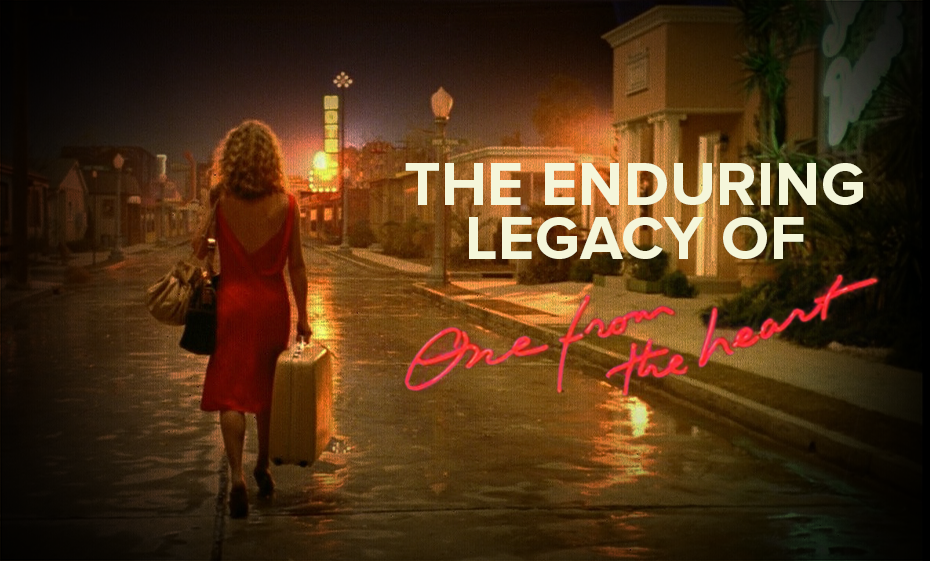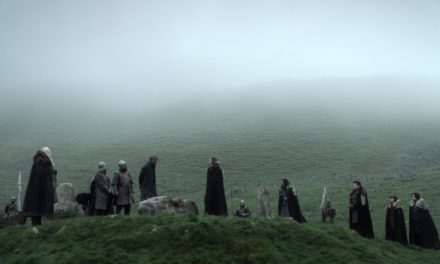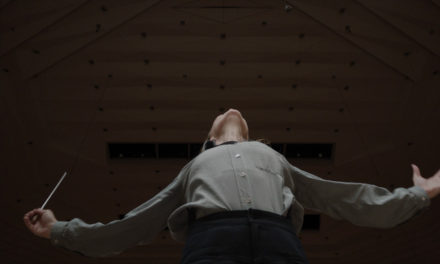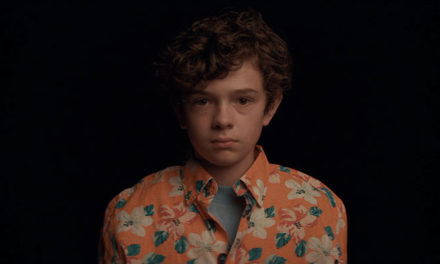05.16.23
BRIGHT LIGHTS & BIG DREAMS: THE ENDURING LEGACY OF ONE FROM THE HEART
When you think of Francis Ford Coppola, you would be forgiven for not thinking of his 1982 romantic musical drama, ONE FROM THE HEART. The film follows Frannie (Teri Garr) and Hank (Frederick Forrest), a couple living together in Las Vegas. On their five year anniversary, which happens to fall on July 4, Frannie and Hank break up. They immediately fall for new lovers (played by Raul Julia and Nastassja Kinski), but question whether their new romances are built to last.
After making The Godfather, The Conversation, The Godfather Part II and Apocalypse Now consecutively, Coppola sought to make a wildly different film. But he also sought out a wildly different way of filmmaking. One from the Heart marked the next phase of American Zoetrope when Coppola created Zoetrope Studios, purchasing and redeveloping an old studio space in San Francisco and pitching an alternative to the established Hollywood system of filmmaking. Zoetrope promised filmmakers a system where artists could make avant-garde work with significant resources, fair pay structures and equitable work weeks. One from the Heart was to be the first film in that new model – a modest, $15 million romantic comedy originally written by Armyan Bernstein for MGM, brought over to Zoetrope and developed into a flashy, neon-filled musical paying tribute to its Hollywood predecessors, while holding onto its independent storytelling sensibilities.
Zoetrope Studios did not last. One from the Heart’s original budget of $15 million ballooned out to $26 million, with Coppola and his team unable to keep costs down as they built a stylized version of Las Vegas entirely on stage. When distributors dropped out over budgetary concerns and the film’s premiere at Radio City Music Hall was panned by critics, One from the Heart made less than $650,000 at the box office before Coppola himself pulled its distribution.
While One from the Heart was initially dismissed as a critical and commercial flop, its influence has steadily grown – particularly among newer generations of filmmakers. Coppola’s direction and the actors’ performances have been rediscovered and reappraised over the years, as have Dean Tavoularis’s sprawling production design and Vittorio Storaro and Ronald Victor Garcia’s expressionist shooting style. Particularly for younger filmmakers looking to recapture the feeling of American technicolor musicals of the 1940s and 50s but with a more modern sensibility, One from the Heart stands as an invaluable reference point and a bridge between the eras.
While it is always hard to directly account for influences and how they make their way into someone’s work, One from the Heart presents an interesting case study of a film from such beloved filmmakers with such a distinctive visual style that it becomes difficult not to speculate how its influence may have spread. So let’s take a look at some directors who have cited the film as having a real impact on their work and some moments in those works that might be examples of One from the Heart shining through.
BLADE RUNNER 2049 (2017)
Blade Runner 2049 production designer Dennis Gassner was a graphic designer for Tavoularis on the set of One from the Heart, assisting Tavoularis and his team as they built Vegas from the ground up on a soundstage. When he teamed up with collaborators Denis Villeneuve and Roger Deakins to film Blade Runner 2049, One from the Heart became a core shared reference. Here are two moments in which that influence may have appeared.
As Hank starts to fall for Leila, he can’t help but see her everywhere, fantasizing about being with her as he prepares for their date. He walks past a neon billboard of a woman, and as he stares at it, the billboard morphs into an image of Leila, staring back at him. This shot has become one of the most memorable of the film, blurring the lines between reality and fantasy, and commenting on the sex appeal advertising aims for all at once.
This shot of Joi emerging from the futuristic neon advertising to stare at K is a direct homage to One from the Heart. This shot has become one of Blade Runner 2049’s most iconic moments, and asks similar questions as One from the Heart about the line between reality and fantasy, and the role of advertising in our lives.
Coppola wanted Las Vegas to be built entirely on a soundstage for One from the Heart to ask questions about the artificiality of the city, and the way that artificiality transmits an influence on our relationships, our dreams and ourselves. In this scene, when Franny and Ray are on their date getting to know each other, Storaro and Garcia bathe an empty ballroom in a deep orange light, creating a feeling of sunset even though we are indoors.
When K meets Decker for the first time in Blade Runner 2049, he visits him in Las Vegas. Vegas in this film is a crumbling, artificial relic, full of empty ballrooms with lonely pianos, and bathed in a toxic, artificial orange light that makes us feel like the sun is always setting on this artificially created city. The palette and production design feel tonally similar to One from the Heart, even though the genre of the film and the stories of the scene diverge greatly.
STRICTLY BALLROOM (1992)
The influence of One from the Heart is a theme throughout the filmography of Baz Luhrmann, who has cited One from the Heart as an influence, particularly in its use of signage and lighting design. Here is one way that this influence may have made its way into his debut feature, Strictly Ballroom.
This scene in One from the Heart finds Frannie and her new lover, Ray, as they are starting to fall for each other. Storaro and Garcia cast them in silhouette with expressive backlights, following them around the room as they dance together.
Luhrmann and cinematographer Steve Mason set similar parameters for this crucial scene in Strictly Ballroom, when our central character Fran and her dance partner Scott first start to fall for each other as they practice for the competition. The empty ballroom, the drapes, the expressive backlighting and the silhouettes all call our attention to the mood of the moment, and the feeling of falling in love.
MOULIN ROUGE! (2001)
Moulin Rouge! is perhaps the film from Baz Luhrmann’s filmography that shares the most similarities with One from the Heart in story and aesthetic approach. Here is another potential moment where One from the Heart influenced his work.
Leila’s introduction to Hank as a bedazzled acrobatic nightclub performer puts her in lights from the very first frame, but it’s when we see her tightroping across the night’s sky that we truly see who she is to Hank – a fantasy. Tavoularis’s painted backdrop of the Vegas sky, with the neon sign and the sparklers that make her look like a literal star, shows her as a mirage in Hank’s eyes, and as a person who may never come down to Earth.
Satine in Moulin Rouge! occupies a similar type of status in the eyes of Christian, who is also introduced to her as a star performer, an acrobat, and a person who we learn will always be out of his reach. Catherine Martin’s production design ensures we meet Satine as she is suspended in the sky, bedazzled against a blue backdrop that imprints her as an image of our fantasies.
ELVIS (2022)
One from the Heart is awash in neon – but the way that Storaro and Garcia used it as a composition device throughout the film is unique. This shot in One from the Heart finds Frannie at a moment of transformation – her hair is different, her clothes are different, and she is reinventing her identity. Framing her in neon as though she is a part of the flashing lights herself.
In Elvis, this shot finds Elvis at the moment where he is leaving the Memphis Recording Services to sign with Colonel Tom Parker – a point of transition where he is leaving behind his old identity and forging a new image of himself to be shown to the world. Just as his name is about to go up in lights, he is framed, just as in One from the Heart, surrounded by neon. Baz Luhrmann has noted the influence of One from the Heart’s neon lights on his own filmmaking aesthetic, and though these moments are constructed to different emotional ends in each film, the compositional and lighting similarities between them are quite noticeable.
LA LA LAND (2016)
Several numbers from La La Land were shot on the same lot on which Coppola and his team filmed One from the Heart. There are a few sequences from One from the Heart which bear resemblance to moments in La La Land – here are two that may have influenced Damien Chazelle and his filmmaking team.
As their romance in One from the Heart begins to flourish, Frannie and Ray leave a party on the streets of Vegas to be alone on the edge of the city, dancing together suspended in time during an impossibly pink and blue twilight. The audience knows that their romance will be consummated – but we’re not sure where it will go from there.
After running into each other at a party, La La Land’s Mia and Sebastian find themselves on the edge of Los Angeles, looking out over a city suspended in an impossibly pink and blue twilight. The two break out into their first dance together in the film. Just as in One from the Heart, this sequence demonstrates that these two characters will get together. Will they stay together?
If vibrant reds, blues, yellows and pinks means love to Coppola, Storaro and Garcia in One from the Heart, this teal-like shade of green means heartbreak. Waits’s score takes a turn for the somber in this scene, almost dropping out of the soundtrack entirely as Hank tries to win Frannie back at the airport, only for her to get on the plane and walk out of his life.
The teal-like green in Sebastian’s apartment is a sharp break from the vibrant blues, yellows and pinks that dominate the rest of La La Land. In this scene – one of the only without the film’s signature flowing camera – Sebastian and Mia break up, making us wonder if they’ll ever be able to repair their relationship. And while this color scheme on the curtains obviously recalls iconic hotel room set in Vertigo as much as anything, the similarities between these moments from One from the Heart and La La Land are made all the more noticeable by their shared genre and story elements. It is possible that Chazelle was working with a melange of visual influences here to create this climactic emotional sequence.
BABYLON (2022)
In One from the Heart’s most ecstatic sequence, Franny emerges like a lightning rod in the middle of a street party on the Vegas strip, dressed in a flowing red dress by costume designer Ruth Morley. The camera follows her as she draws a huge crowd around her, dancing wildly with Ray amongst them all.
Babylon is another Damien Chazelle film that is steeped in the legacy of its influences, and that, similarly to One from the Heart, approaches its subject matter with maximalist exuberance. The film introduces us to Nellie with a bang. She emerges from a bright convertible dressed in a flowing red dress by costume designer Mary Zophres, and is instantly at the center of a wild party with people all around her. Amongst it all, the camera follows her and Manny as they dance together. While not necessarily a direct quotation, this moment bears some interesting resemblances to Franny’s dance in One from the Heart.
While One from the Heat does not tend to top the list of Francis Ford Coppola’s most well-known movies, it certainly has a case for being one of his most visually distinctive. Its bold style and unique combination of elements make it an important entry in his filmography, and it is filled with moments of such visual bravura that it’s hard not for younger generations of filmmakers to be drawn to its infectious ambition. One of Coppola’s most derided works at the time of its release has a case for now being one of his more influential, prompting a conversation about whether we should reconsider its place in his canon.
SOURCES
The Dream Studio: One from the Heart Documentary
New Yorker: Movie of the Week: “One from the Heart”
Obscur: Unwatched Gems – One from the Heart
Spectrum Culture: Criminally Underrated – One from the Heart
The Spool – Inside the ambitious failure of Coppola’s “One from the Heart”
Collider – In Praise of ‘One from the Heart’
The Quietus – One from the Heart
Vanity Fair – The Unlikely Inspiration Behind Blade Runner 2049’s Futuristic Design
Sydney Morning Herald – The Untold Story behind Baz Luhrmann’s Big Neon-Red Love Sign














